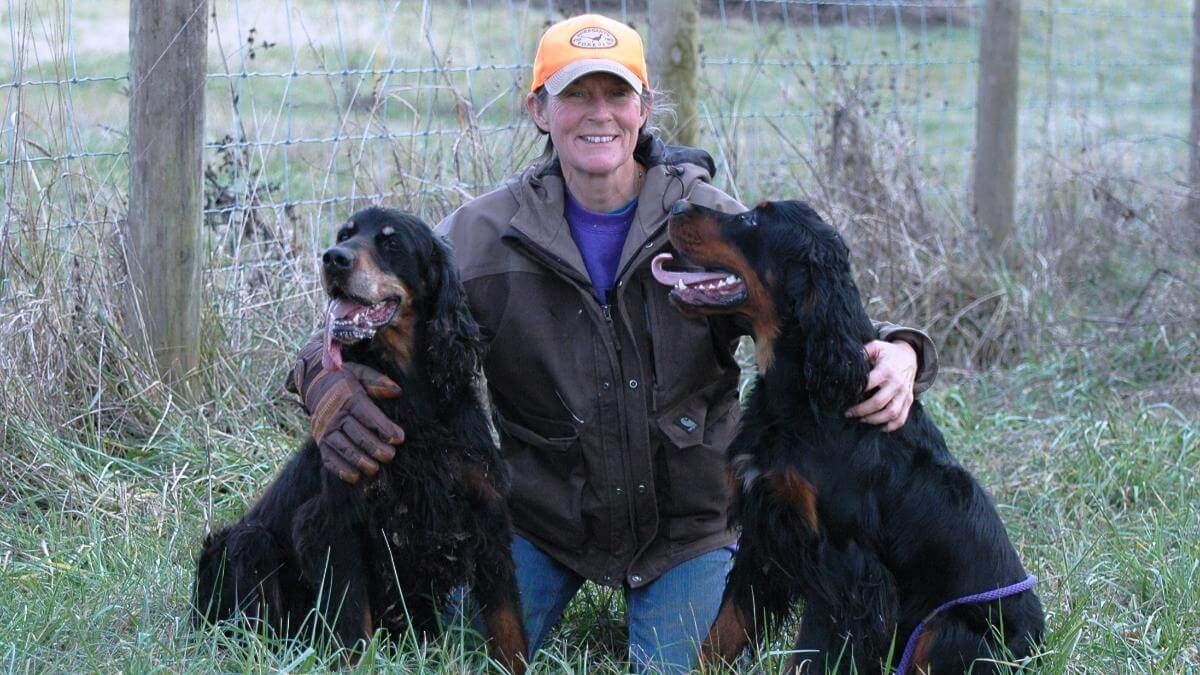
Home » Rhonda Cornum | Munroc Gordon Setters

Rhonda Cornum
1. I am Rhonda Cornum, and while I started with my first Gordon Setter in the late 1960s, I didn’t aggressively pursue my dream of Dual Champion dogs until after I retired from the Army in 2012. Since then, we have produced at least three Dual Champions, with several more within “striking distance.” I live on 700 acres in central Kentucky, and my kennel name is Munroc, which is my last name spelled backwards.
2. The hallmarks of Gordons are that they are a substantial, moderate-sized dog that “appears capable of a full day’s work in the field,” according to our Breed Standard. They were developed to hunt game birds on cold Scottish moors. They should never be light-boned and “racy,” as is popular among some field trialers, but neither should they be over the Standard and somewhat ponderous, with so much hair that they would be trapped in the brush in minutes.
3. If you produce good-looking, healthy, long-lived dogs with good temperaments, then I have found there are always a sufficient number of quality homes to place every puppy, regardless of the breed. It is almost impossible to get a puppy within a year in many breeds.
4. Though I am not present on any social media platform, our dogs have friends and co-owners who are and keep the digital community apprised of our activities. In addition, working with an internationally based IT business has made it possible to travel and evaluate and breed dogs from several European countries, expanding the available gene pool.
5. Unfortunately, a generalized prejudice against purebred dogs seems to have developed. I suspect this represents ill-informed media and some “non-profits” simply trying to stop the production of purebred dogs. They would have people believe that the “right” way to get a puppy is to adopt an unwanted dog from a shelter. The truth is, there should be no unwanted puppies! Only irresponsible people allow mixed breedings to occur or allow dogs they have bred to get dumped in shelters. I think every breed club has a Code of Ethics stating that members take responsibility for all the puppies they produce, for their entire lives. Certainly, the Gordon Setter Club of America does. The problem is NOT purebred dogs. The problem is irresponsible people.
6. Two concerns: First, fewer young people are entering the fancy and participating. We all need to do all we can to encourage them. My other concern is people breeding for only one aspect of their breed, be it Performance or Conformation. This has led to the split we see in many breeds, most noticeable to me in the Sporting and Hound Groups. The actual hunting/racing dogs have diverged significantly from the “show only” dogs. Individual owners can pick a single sport, or no sport, and just have a family companion, but breeders should produce dogs that both look like the Standard and can perform as intended.
7. I think the number of people concerned with excellent temperaments, in addition to Conformation, especially in the historically aggressive breeds, has increased significantly. And I think, as the sport has contracted, more people have recognized that we need to help each other, and are stepping up as needed.